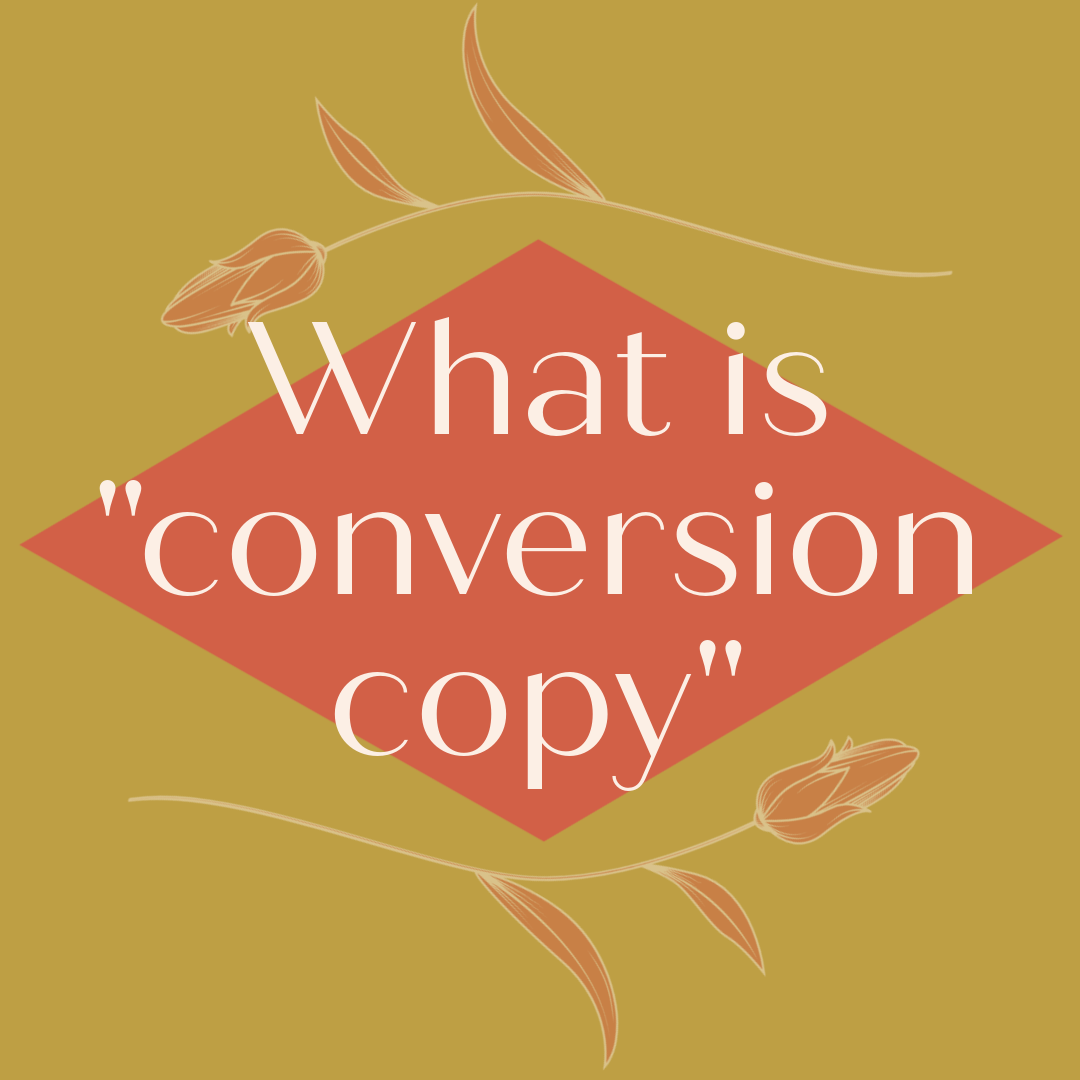What is “Conversion Copy”?
When I ran my first Truer Copy Mastermind back in February, I asked my students what they wanted to learn. How to write your own web copy, of course, was a given. But one student had a more specific request.
“One more thing I want to learn in these sessions is how to convert. I learned about the phrase ‘conversion copy’ — what is that? It sounds like I need it if it’s going to get me sales!”
So...What is Conversion Copy?
I’ve got a long history with conversion copy. In fact, I used to have “Conversion Copywriter” as my primary descriptor on LinkedIn and my website with certificates to prove it. I used to think that was important. I don’t anymore.
But let’s start with definitions.
Conversion Copy is copy written to make the reader take an action, like clicking a button, buying a product, signing up for a newsletter, etc.
If that sounds like the purpose of all copy - you’re right.
But, as a Conversion Copywriter, my job isn’t just to write copy that = action, it’s also the science of manipulating consumers into taking the desired actions. It’s knowing the psychology behind what makes people buy and using specific triggers to overcome objections and make the sale as tempting as possible.
And then tracking the results so you can optimize the process to make saying ‘no’ even harder.
It gets dirty really fast, folks. And some copywriters get off on the power trip. They brag about their results. They base their entire businesses on being better manipulators. Yech.
The thing is: it’s not all bad. Like most things in this world, it’s complicated.
There are some parts of Conversion Copy that I still use and sincerely respect, like:
Using client testimonials, interviews and questionnaires to get voice-of-customer data - word for word snippets that speak to pains, desires and value that you can use directly in your web copy.
Collecting data on what works and what doesn’t on a sales page, so you can optimize for better results (that’s the basis of my It’s Gotta Work Guarantee and my Evolutionary Copy sessions).
Human psychology - I still refer back to Cialdini’s 6 Principles of Persuasion. People have to know, like and trust you to give you their money. So much of marketing is just doing those jobs.
As a former member of the ethical move, I helped to create a growing list of manipulative sales tactics that we commit to not using — which fall under Conversion Copy also.
Icky things like…
Shaming someone if they don’t opt-in (pop-ups that say “Oh, so you don’t want amazing results and a successful business?” when you click away, or questioning someone’s commitment if they don’t want to buy now).
“Secret recipe” promises, when a business claims they have the exclusive secret to success, or a shortcut nobody else has (a well-developed Point of View is so much more effective!).
Hammering pain points to make people feel worse about themselves (empathy is one thing, punching the bruise to remind prospects how much they’re hurting is another).
There are so many more.
My Truer Copy Mastermind is based in ethical marketing practices, and we’ll be navigating some fine lines (and some big thick lines) as we talk about what makes for effective copy that sells, without being salesy or manipulative. If that’s the kind of copywriting you want to learn, enrollment is open now through October 1st.
I don’t judge. I’ve used some tactics in my past SaaS work that I wasn’t comfortable with, because I didn’t know there was another way.
What I want for you is to be 100% proud of what you put out there.

